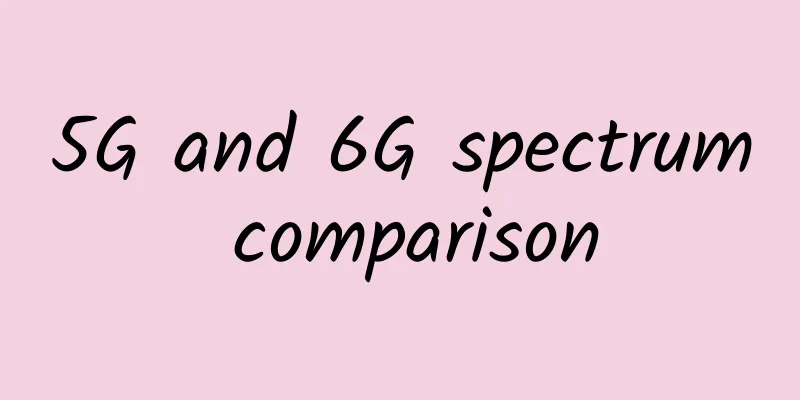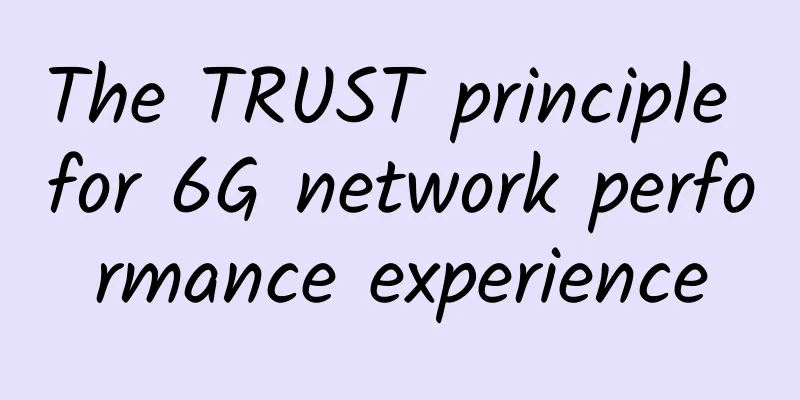5G and 6G spectrum comparison

|
6G is not yet widely available, but the latest specification - Wi-Fi CERTIFIED 6 Release 2 - was released in January 2022. For ordinary users, 6G is unlikely to completely or immediately replace 5G, and it will be built on existing 5G infrastructure. The cornerstone of 6G technology is that it will use higher frequency bands of the electromagnetic spectrum than 5G, achieving faster data transmission rates, reducing network congestion and lowering latency. 6G and the use of extended spectrum to terahertz (THz) frequencies will more effectively support new technologies and applications ranging from wireless brain-computer (BCI) devices to the Internet of Things in Space (IoST). What is spectrum in wireless networks?Spectrum in wireless networks refers to the radio frequency (RF) range used by Wi-Fi signals, for example. The spectrum is grouped into bands, which define high and low frequencies within each spectrum. Within each band, a certain capacity is allocated for Wi-Fi use. KHz, MHz, and GHz are measurements of frequency (units of speed in cycles per second). The frequency bands available for wireless communications are usually between 20 KHz and 300 GHz and are usually divided into low, mid, and high bands. The low, medium and high frequency bands have different characteristics. A recent Accenture study identified the following average ranges for these bands: Low-band spectrum (3.1 GHz to 3.45 GHz) enables data to travel greater distances with less signal interference. High-band spectrum (7.125 GHz and 8.4 GHz) reduces the distance data can travel but allows for faster data transmission compared to low-band spectrum. Mid-band spectrum (4.4 GHz to 4.94 GHz) provides capacity between low-band and high-band spectrum. The frequently used term sub-6GHz usually refers to the low- to mid-frequency bands below 6GHz. Governing BodyIn the United States, for example, frequency allocations are managed by the Federal Communications Commission (FCC). A complete table of frequency allocations can be viewed here. Standards for network generations are set by various regulatory bodies, such as the 3rd Generation Partnership Project (3GPP) and its partners. 5G and 6G spectrum comparisonCertificationWhile subsequent wireless technologies are often referred to as upgrades or new versions, they are new iterations of wireless technology with different use cases. Each generation may have multiple releases. For example, the latest version of the 5G standard is 17. The initial 6G standard covers the 2.4 GHz and 5GHz bands. The 6E standard (where the “E” stands for extended) extends 6G capacity to the 6 GHz band, allowing up to 1,200 MHz of additional spectrum. For simplicity, Wi-Fi CERTIFIED 6 Release 2 covers all three bands.
Typical equipment
Use Cases5G was developed to support the growing Internet of Things (IoT). It is designed to support smart applications such as smart agriculture and smart cities, telemedicine, virtual reality, enhanced mobile broadband (eMBB), and sensory-based applications such as immersive gaming. However, the spectrum it uses is becoming increasingly crowded and cannot effectively support some emerging technologies. 6G is designed to accelerate IoT systems and will be widely used in commercial and industrial fields to expand the capabilities of edge computing devices, in the military, holographic communications, remote control driving, connected robotics and autonomous systems (CRAS) and wireless brain-computer (BCI) devices, and enhance digital twins. 6G is expected to play a key role in IoST, such as unmanned aerial vehicles (UAVs) and CubeSats (small satellites). It will be used in the personal field for applications such as autonomous systems, tactile and sensing devices, and advanced extended reality (XR) applications. The vision of 6G is to support the Internet of Everything (IoE). Maximum frequencyA band covers a range of frequencies, sometimes expressed in terms of wavelengths.
Maximum bandwidthBandwidth describes the size of a frequency band, which is the highest available frequency minus the lowest available frequency. Because 6G will use higher frequency bands than 5G, it will be faster and provide higher throughput. Throughput in a wireless network is a measure of the actual data transferred between network devices, while bandwidth refers to the theoretical capacity of the network to transfer data. This theoretical capacity is much higher than what users can expect in reality. Signal interference, physical obstructions, and the distance between the device and the wireless access point (AP) can all negatively affect actual throughput.
Peak data rateData rate refers to the fastest speed at which data can be transferred. These numbers refer to potential capacity in terms of standards and are rarely consistently achieved in the real world. Kbps, Mbps, and Gbps are measures of bandwidth speed. Gigabytes per second are often written as GBps, with the "b" being lowercase for gigabytes per second. There are 8 bits in a byte, so a download speed of 20 Gbps (20 Gb/s) is 2.5 GBps(2.5 GB/s).
Average user experienced data rate
Peak spectral efficiencySpectral efficiency is a measure of the amount of data that can be transmitted to a defined number of users or services within a specific bandwidth within a defined geographical area. It is measured in (bit/s)/Hz.
Average spectral efficiency experienced by users
Mobile support
density
End-to-end latencyRefers to the time taken between a request and a response.
Single frequency full duplex transmissionFull-duplex means enabling bidirectional traffic so that data can be sent and received simultaneously on the same frequency, potentially saving 50% of spectrum requirements.
Global Coverage
in conclusionThe Internet of Things has been around for a while, but 5G has not been very efficient due to poor allocation and subsequent overcrowding of certain spectrums. 6G aims to extend the range, capacity, speed, and energy efficiency of 5G. It is predicted that 6G will largely see the end of the smartphone era. Instead, there will be a shift towards the use of wearable technology. However, some experts believe that even 6G will not be able to handle wearable Wi-Fi. So, is it possible that 7G will replace the use of 6G? |
<<: The difference between SMTP and IMAP in email protocols
>>: New 5G transmission specification helps support demanding 5G applications
Recommend
80VPS: Los Angeles cluster server monthly payment starts from 750 yuan, Hong Kong CN2 cluster monthly payment starts from 1400 yuan, 8C (232 IPs)
80VPS is an early established Chinese hosting com...
DiyVM: Japan/US/Hong Kong CN2 line 2G memory monthly payment starting from 50 yuan
DiyVM is a Chinese hosting company founded in 200...
CMIVPS: VPS hosting with 30% off annual payment and 20% off monthly payment, large bandwidth/direct connection in Hong Kong
CMIVPS released a new discount plan for blog read...
HostYun Unicom AS4837 line KVM is available with 15% discount and monthly payment starts from 17 yuan
Earlier this month, we shared the news that HostY...
5G empowers the industrial Internet to accelerate its implementation and help the transformation and upgrading of the manufacturing industry
[[381477]] The Ministry of Industry and Informati...
This article explains in detail the discovery and processing of BigKey and HotKey in Redis
[[420295]] 1. Introduction When using Redis, we o...
HostDare offers a 20% discount on the CN2 GIA route in Los Angeles starting at $28.7/year
HostDare has updated new discount codes, offering...
This may be the correct way to open 5G
I wonder what you think 5G should look like? Fast...
New 5G transmission specification helps support demanding 5G applications
The Broadband Forum has published its technical r...
Web Hosting Guide: Ten Ways to Improve Website Performance
In today’s digital world, website speed is extrem...
5G in numbers: 5G trends revealed by statistics in the first half of 2021
[[420577]] 2021 marks the second anniversary of t...
Review of the computing power network in 2021: The computing power is surging, and the power is growing together
The sun and the moon are moving forward, the rhyt...
Smart commercial buildings: Top 10 technologies to watch
In recent years, rapid advances in digital techno...
5G phones are now online. How long can 4G phones last? Can old phones use 5G networks?
With the advent of 5G technology, 5G has become a...
7 Industries That Will Be Revolutionized by the Internet of Things
What kind of revolutionary impact will the Intern...









